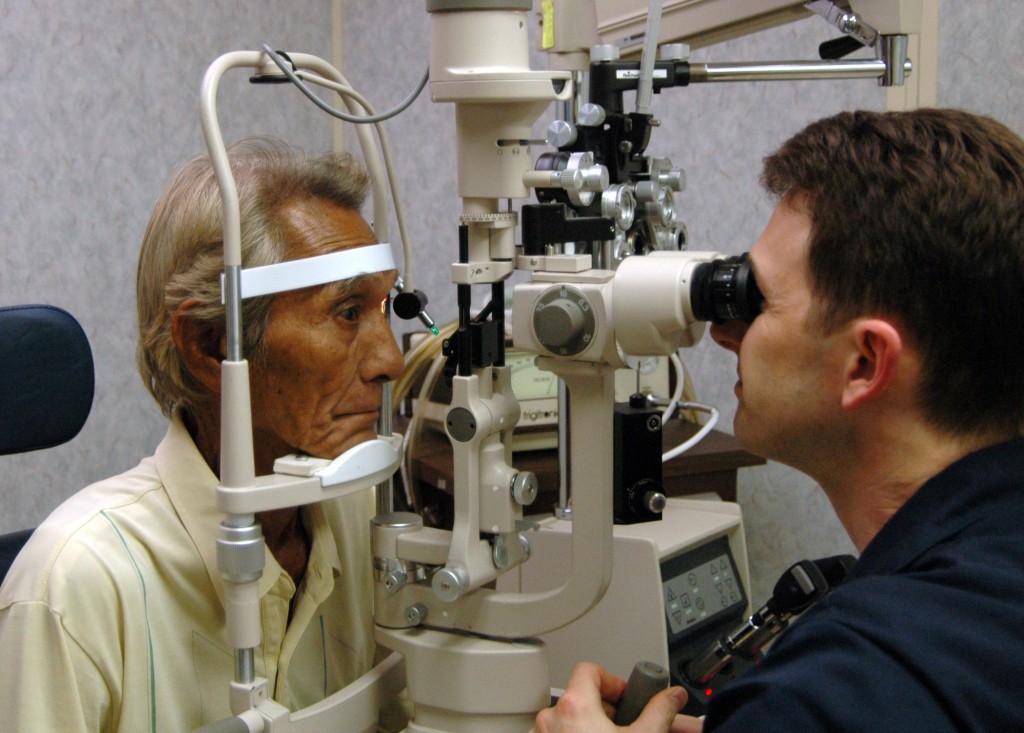Senior Care: Eye Care for Seniors

Know what to look for and what to do in order to preserve your eye health.
Normal Vision Development
As we age, even people who do not have age-related eye diseases and who have good visual acuity may experience vision changes. Presbyopia (loss of elasticity of the lens of the eye, occurring typically in middle and old age), which begins in the late 30s or early 40s, usually continues to increase over time.
Seniors may also notice:
Eyes take longer to adjust and focus or don’t adjust very well when a person moves from a well-lit area to a poorly lit area, or the other way around. Such problems in adjusting to light and dark can make driving more difficult, especially at night or in the rain. Driving may be even more challenging for people with eye diseases that reduce their peripheral (side) vision or increase their sensitivity to glare. To be on the safe side, it is recommended that elders consider taking a driving course designed specifically for seniors, drive during daylight hours, reduce speed and be extra-cautious at intersections.
It may become more difficult to distinguish an image from its background when subtle gradations of tone are involved. This is called loss of “contrast sensitivity.”
Interestingly, research has found that the eye’s “rod” cells, responsible for the visual functions described above, are more likely to degrade with age than the “cone” cells, which are responsible for visual acuity and colour vision. The health of rod cells is also more dependent on environmental factors such as nutrition, smoking, and excessive sun exposure, all of which we can control or choose, to some extent.
Vision Screening Recommendations:
It’s important to have a complete eye exam with your Eye M.D. every year or two after age 65 to check for age-related eye diseases such as:
- age-related macular degeneration
- diabetic retinopathy
- glaucoma
- cataract
- or any other eye conditions.
Tips for Eye Health in Adults Over 60:
Women are more likely than men to have glaucoma and women are also more likely to be visually impaired or blind due to glaucoma. Also, women are 24 percent less likely to be treated for glaucoma. Cataract is somewhat more common in women, as well. Women should be sure to follow screening guidelines and adhere to their Eye M.D.’s follow-up appointment recommendations and treatment plans.
Low Vision
The term low vision describes vision loss that makes daily tasks difficult. Normal aging of the eye does not lead to low vision; it is a result of eye diseases, injuries or both. Low vision symptoms include loss of central and/or peripheral (side) vision, blurred or hazy vision or night blindness. A person may have trouble recognizing faces, reading, driving and shopping. If you experience any of these problems, it is important to see your Eye M.D., who will check for and treat any underlying conditions and advise on low vision resources and low vision aids and devices to help with reading and other daily tasks. Most people with low vision need brighter lighting in their living areas.
Avoid Falls and Related Eye Injuries
About half of all eye injuries occur in or around the home, most often during improvement projects (44 percent). The good news is that nearly all eye injuries can be prevented by using protective eyewear, so every household needs to have at least one pair of certified safety glasses on hand.
It’s also important to reduce the risk of falls, which become more likely as we age, due to changes in vision and balance. Consider taking these safety steps around the home to diminish the risks of injuring your eyes:
Make sure that rugs and shower/bath/tub mats are slip-proof.
Secure railings so that they are not loose.
Cushion sharp corners and edges of furnishings and home fixtures.
Systemic health problems
Systemic health problems like high blood pressure and diabetes that may be diagnosed or become more problematic in midlife can also affect eye health. One warning sign of both high blood pressure and diabetes is when the ability to see clearly changes frequently. Be sure to keep your Eye M.D. informed about your health conditions and use of medications and nutritional supplements, as well as your exercise, eating, sleeping and other lifestyle choices.
Exercise – Our eyes need good blood circulation and oxygen intake, and both are stimulated by regular exercise. Regular exercise also helps keep our weight in the normal range, which reduces the risk of diabetes and of diabetic retinopathy. Gentler exercise, including walking, yoga, tai chi, or stretching and breathing, can also be effective ways to keep healthy. Remember to use sun safety and protective eyewear when enjoying sports and recreation.
Sleep – As we sleep, our eyes enjoy continuous lubrication. Also during sleep the eyes clear out irritants such as dust, allergens, or smoke that may have accumulated during the day.
Some research suggests that light-sensitive cells in the eye are important to our ability to regulate our wake-sleep cycles. This becomes more crucial as we age, when more people have problems with insomnia. While it’s important that we protect our eyes from over-exposure to UV light, our eyes also need exposure to some natural light every day to help maintain normal sleep-wake cycles.
Maintain your most precious gift. Contact your family doctor or eye care practitioner and arrange for an eye exam if you have have not done so in the last two years. Early detection of any problems are best caught early on. If you need assistance in getting to your doctor and or making the appropriate arrangement do not hesitate to contact us… we will be happy to support your needs.
